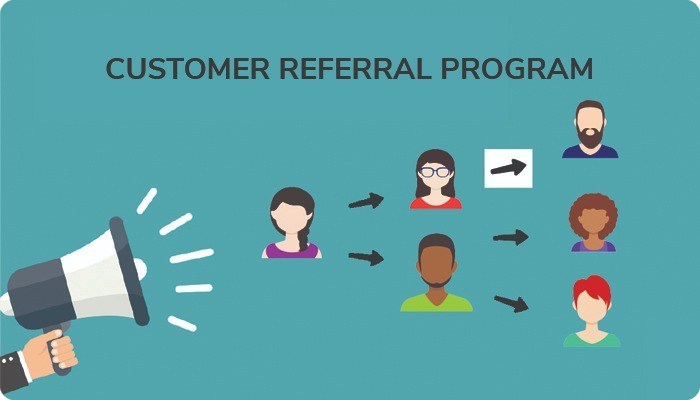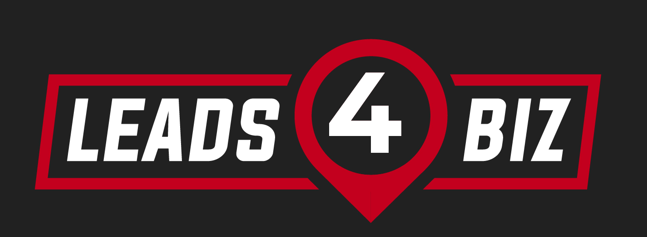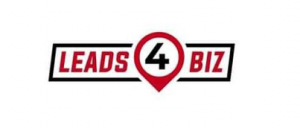
Why Lead Referrals Are More Cost-Effective Than Traditional Lead Generation Activities
In the ever-evolving world of sales and marketing, businesses are constantly seeking ways to generate high-quality leads while minimizing costs. Traditional lead generation methods, such as cold calling, paid advertising, and email campaigns, have long been the go-to strategies for many companies. However, in recent years, lead referrals—leveraging your network to recommend your products or services—have emerged as a more cost-effective and efficient alternative. This essay explores why lead referrals outperform traditional lead generation activities in terms of cost-effectiveness, focusing on trust, conversion rates, customer lifetime value, and operational efficiency.
1. The Power of Trust and Credibility
One of the most significant advantages of lead referrals is the inherent trust and credibility they carry. When a potential customer is referred to your business by someone they know and trust, the likelihood of them engaging with your product or service increases exponentially. Trust is a critical factor in the decision-making process, and traditional lead generation methods often struggle to establish it quickly.
For example, cold calling or cold emailing requires the salesperson to build trust from scratch, which can be time-consuming and often ineffective. In contrast, a referral comes with a pre-established level of trust, as the referrer has already vouched for your business. This trust reduces the need for extensive marketing efforts to convince the lead of your credibility, thereby lowering the cost of acquisition.
2. Higher Conversion Rates
Lead referrals consistently demonstrate higher conversion rates compared to traditional lead generation methods. According to a study by the Wharton School of Business, referred customers are 18% more likely to stay with a company than customers acquired through other means. Additionally, referred leads convert at a rate of 30% compared to just 1-2% for cold leads.
The reason for this disparity lies in the quality of the leads. Referred leads are typically pre-qualified, meaning the referrer has already identified them as a good fit for your product or service. This pre-qualification reduces the time and resources spent on nurturing unqualified leads, which is a common challenge in traditional lead generation. As a result, businesses can allocate their resources more efficiently, focusing on leads that are more likely to convert.

Imagine a networking event with 8,000 business owners , you can almost guarantee that someone there will be your perfect customer, well we already have that system go to: BUYERS LEADS click the filter we are buying and then tick your business to see who is buying!
3. Lower Customer Acquisition Costs (CAC)
Customer acquisition cost (CAC) is a critical metric for evaluating the efficiency of lead generation strategies. Traditional methods, such as paid advertising, often require significant financial investment with no guarantee of return. For instance, pay-per-click (PPC) campaigns can be expensive, especially in competitive industries, and the cost per lead can quickly add up.
In contrast, lead referrals typically have a much lower CAC. While there may be some costs associated with incentivizing referrals (e.g., offering discounts or rewards), these expenses are often minimal compared to the cost of running large-scale advertising campaigns. Moreover, the organic nature of referrals means that businesses can generate leads without ongoing financial investment, making it a more sustainable and cost-effective strategy in the long run.
4. Increased Customer Lifetime Value (CLV)
Referred customers not only convert at higher rates but also tend to have a higher customer lifetime value (CLV). According to a study by the Journal of Marketing, referred customers have a 16% higher CLV than non-referred customers. This is because referred customers are more likely to be satisfied with their purchase, remain loyal to the brand, and make repeat purchases.
The higher CLV of referred customers further enhances the cost-effectiveness of lead referrals. While traditional lead generation methods may yield a higher volume of leads, the quality and longevity of those leads are often lower. By focusing on referrals, businesses can acquire customers who are more likely to contribute to long-term revenue growth, thereby maximizing the return on investment (ROI) of their lead generation efforts.
5. Operational Efficiency and Resource Optimization
Traditional lead generation activities often require significant time and resources to execute effectively. For example, creating and managing a successful PPC campaign involves ongoing monitoring, optimization, and analysis. Similarly, cold calling requires a dedicated sales team to make hundreds or even thousands of calls to generate a small number of qualified leads.
Lead referrals, on the other hand, are inherently more efficient. Once a referral program is established, it can generate leads with minimal ongoing effort. The process relies on your existing network to do the heavy lifting, reducing the need for extensive sales and marketing teams. This operational efficiency translates into cost savings, as businesses can reallocate resources to other areas of growth.
6. Word-of-Mouth Marketing and Organic Growth
Lead referrals are a form of word-of-mouth marketing, which is one of the most powerful and cost-effective marketing strategies available. Unlike traditional advertising, which requires continuous investment to maintain visibility, word-of-mouth marketing has a compounding effect. As more people refer your products or services, your brand gains organic exposure, leading to a snowball effect of new leads.
This organic growth is particularly valuable in today’s digital age, where consumers are increasingly skeptical of traditional advertising. According to Nielsen, 92% of consumers trust recommendations from friends and family over any other form of advertising. By leveraging lead referrals, businesses can tap into this trust and generate leads without the need for expensive ad campaigns.
7. Enhanced Customer Relationships and Retention
Lead referrals also contribute to stronger customer relationships and higher retention rates. When customers refer others to your business, they are essentially endorsing your brand, which strengthens their own commitment to your company. This sense of loyalty can lead to increased customer retention, as referred customers are more likely to stay engaged with your brand over time.
In contrast, traditional lead generation methods often focus on acquiring new customers at the expense of nurturing existing relationships. By prioritizing lead referrals, businesses can create a virtuous cycle of customer acquisition and retention, further enhancing the cost-effectiveness of their marketing efforts.
8. Scalability and Flexibility
Another advantage of lead referrals is their scalability and flexibility. Traditional lead generation methods often require significant upfront investment and may not be easily scalable. For example, expanding a PPC campaign to target new markets or demographics can be costly and time-consuming.
Lead referrals, however, can be scaled more easily. As your network grows, so does your potential for generating referrals. Additionally, referral programs can be tailored to suit different industries, customer segments, and business models, making them a versatile and adaptable lead generation strategy.

9. Data-Driven Insights and Continuous Improvement
While lead referrals are often seen as an organic and informal process, they can also be structured and optimized using data-driven insights. By tracking referral metrics, such as the number of referrals, conversion rates, and customer lifetime value, businesses can identify areas for improvement and refine their referral strategies over time.
This continuous improvement process further enhances the cost-effectiveness of lead referrals. Unlike traditional lead generation methods, which may require constant experimentation and adjustment, referral programs can be fine-tuned based on real-world data, ensuring that resources are used efficiently and effectively.
10. Competitive Advantage
Finally, lead referrals can provide a significant competitive advantage in crowded markets. In industries where traditional lead generation methods are saturated, referrals offer a way to stand out and differentiate your brand. By leveraging the trust and credibility of your network, you can attract high-quality leads that may be inaccessible through other means.
This competitive advantage is particularly valuable for small and medium-sized businesses (SMBs) that may not have the resources to compete with larger companies in traditional advertising channels. By focusing on lead referrals, SMBs can level the playing field and achieve sustainable growth without breaking the bank.
Conclusion
In conclusion, lead referrals offer a more cost-effective alternative to traditional lead generation activities by leveraging trust, increasing conversion rates, reducing customer acquisition costs, and enhancing customer lifetime value. Additionally, the operational efficiency, scalability, and competitive advantage of referral programs make them a powerful tool for businesses looking to maximize their ROI. While traditional lead generation methods still have their place, the undeniable benefits of lead referrals make them an essential component of any modern sales and marketing strategy. By prioritizing referrals, businesses can generate high-quality leads, build stronger customer relationships, and achieve long-term success in a cost-effective manner.



